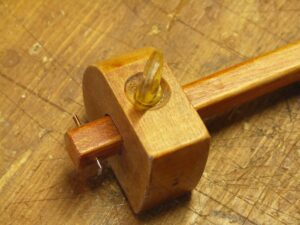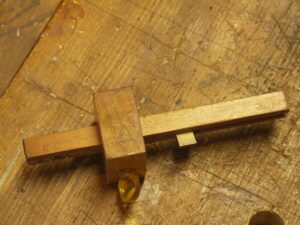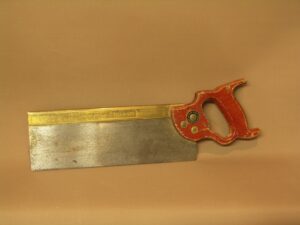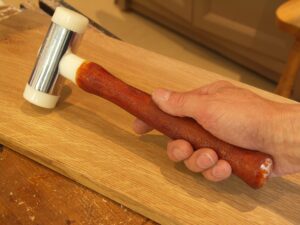Which tools to buy first
Hi Paul,
I cannot thank you enough for the wonderful blessing of imparting your knowledge and skills with me. I absolutely loved the classes, especially your style of teaching and your approach to life in combination with woodworking.
Would you send me your email address? I did some limited searching and of the tools you recommend all of them are 2-4 times more expensive in the USA on eBay. So I might want to get some of them here in the UK.
Blessings,
Caleb
Hello Caleb,
Thought that your question might help others too.
For general joinery you need a good square. At the very top end of the range is the US made Starrett 12″ combination square which will be cheaper in the USAnat $109.98 at Woodcraft. You could buy a UK Stanley Chesterman at $35 whilst you are here. They have proved accurate but the Starrett is a superior tool.
My combination square by Brown and Sharp
Woodcraft also sells new marking, mortise and combination gauges of all types, but you can buy nice old gauges here in the UK quite a bit cheaper and take them back with you. You need either a combination gauge (mortise gauge and marking gauge, two gauges in one) or a dedicated mortise gauge and a marking gauge as two separate units. I prefer them separate but the combo’s are convenient for a first buy tool and it is cheaper than buying two.
Marking gauge
Combination gauge
I like the Stanley or Record 4 1/2 smoothing planes but I also like the lesser size of the #4 too. If you can stand the wait transporting them back to the USA you should take a 5 1/2 model too.
My old Stanley 4 1/2
Look out for the Stanley layout knife we use in the class too. Not sure if I’ve seen them in the USA, but you should buy one new and a couple of packs of vlades. if you resharpen them instead of throwing them away they will last a couple of years per blade.
Sliding bevels are useful and are quite expensive these days. Car boots or eBay should turn up a good one for you. I use them quite often and they are never more irreplaceable than when you need one.
Tenon saws are fairly inexpensive secondhand too. You need both a shorter 8″ dovetail saw and 12-14″ tenon saw.
A 60’s Tyzack Tenon (backsaw) saw
My old Mathieson dovetail saw
This is an old Henry Disston D7 circa 1848
Look out for a handsaw or two too.
My Eze Lap diamond plates
Don’t forget the sharpening stones. They should be cheaper in the USA because they are made there. Coarse and superfine should be enough.
Of course you must have a chisel mallet and I use panel beating hammers for much of my daily work, which is a major shift for me from conventional wooden mallets. I of course still use wooden mallets but the Thor hammer has become the one I reach for with equal demand and they are an excellent option to get you started. I removed the cheap plastic grip in this case and reshaped the shaft as I would had I made the hammer shaft from wood. I also roughened the shaft with a coarse rasp and stained it with shellac to give it a positive feel and grip.
My Thorex hammer












Paul,
Have you ever written a post on price points for the older models of tools you always have pictured (Saws, chisels, gauges, etc)? I’ve been looking around a bit on ebay but am unsure of what is a deal, about average, or overpriced.
Thanks & regards.
We can’t do that for many reasons not the least of which is our blog which has tripled and quadrupled the price of most hand tools sold today via ebay. I used to buy vintage Marples boxwood handled chisels in sets for around £15. Those sets sell for over £100 today if you are lucky.
I probably should’ve thought about that a little more before asking the question. Good point, makes sense. Appreciate the hasty response.
Regards,
Jeff W.
Hi Paul,
‘m interested in learning woodworking. I’m French, living in the US. I moved here quite late so the metric system is my natural way of measuring stuffs. Everything here is imperial system… tools, websites, plans
I can learn the imperial system (but I don’t really want to) also I will move back to France at one point and switch back to the metric system.
dDo you have any recommendation in that regard?
Learn both systems and work them both into your work. I interchange now between the two and then I also add in imperial in 10ths of an inch, which of course means you work it similarly to the metric system but with one inch being a unit of 12 in a foot, so 120 subdivisions at ten per inch and these then divided down in tenths also.